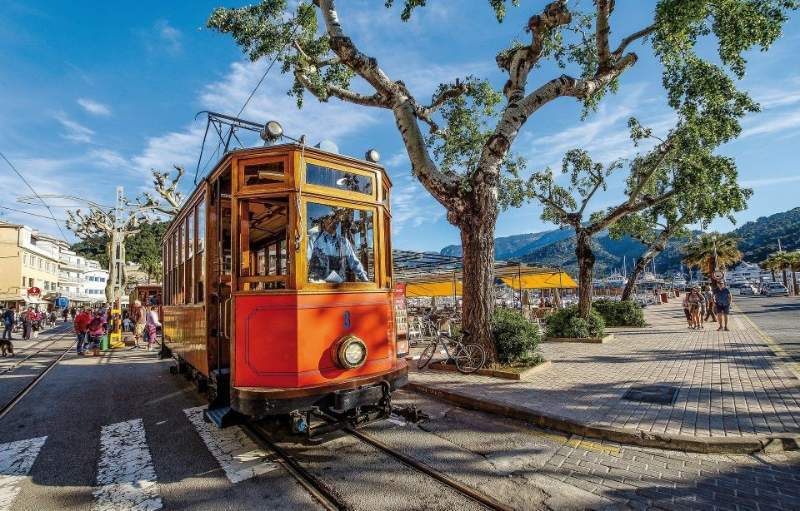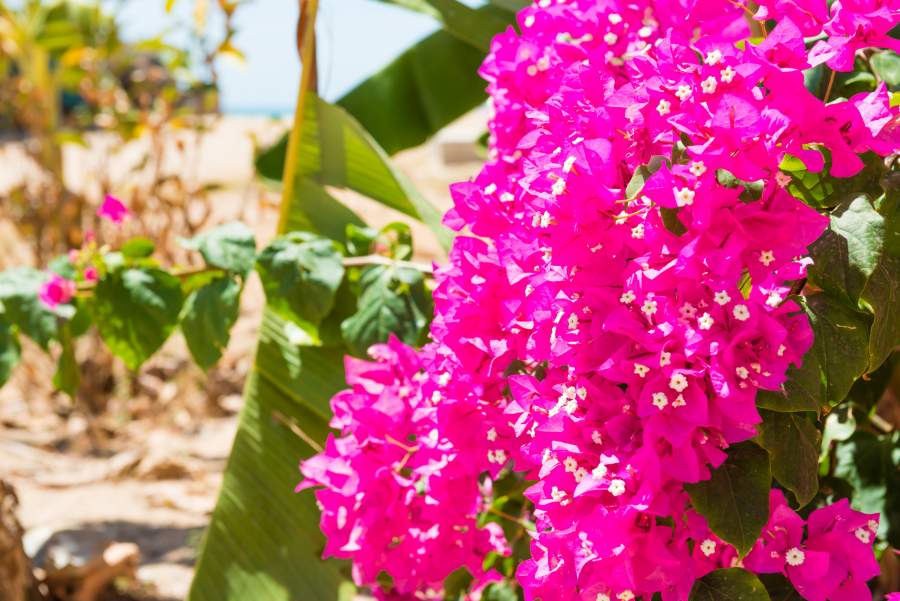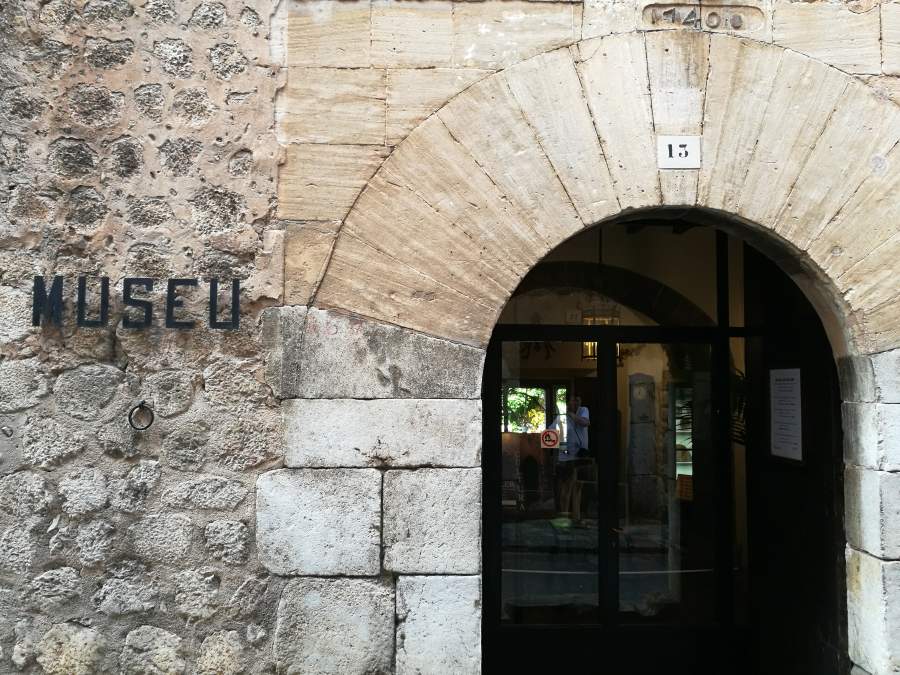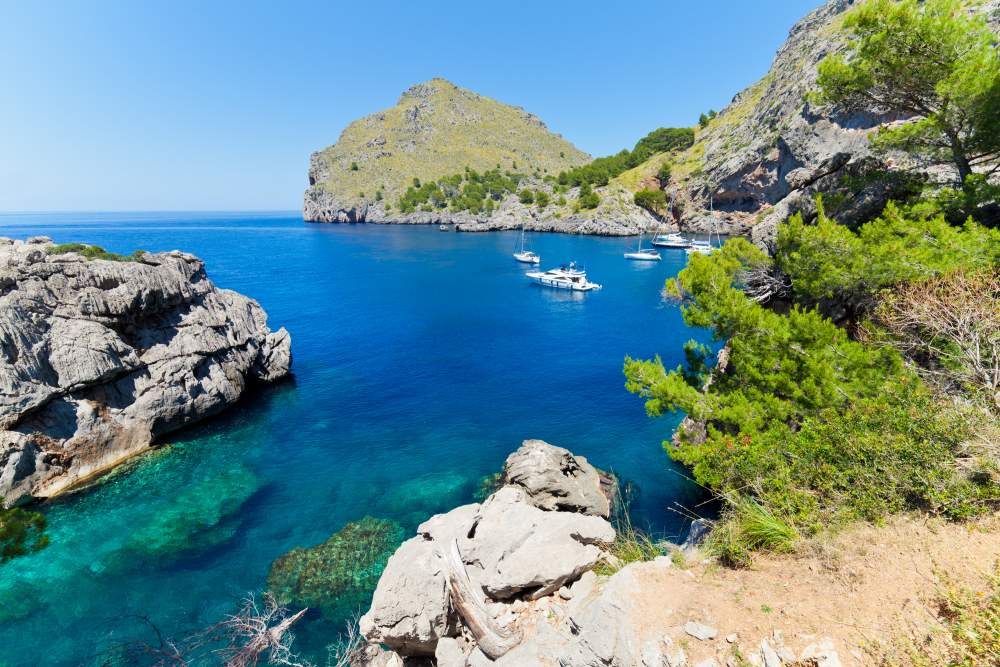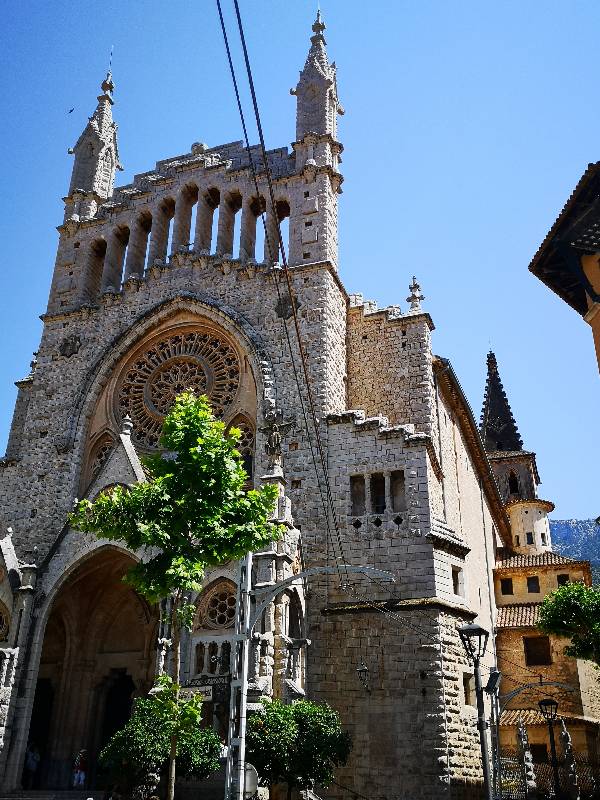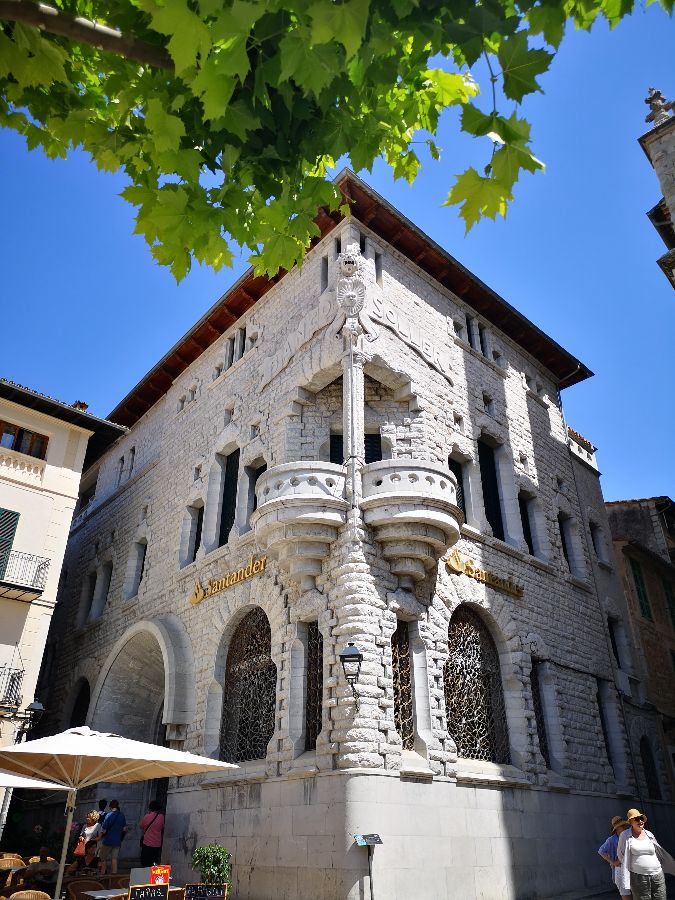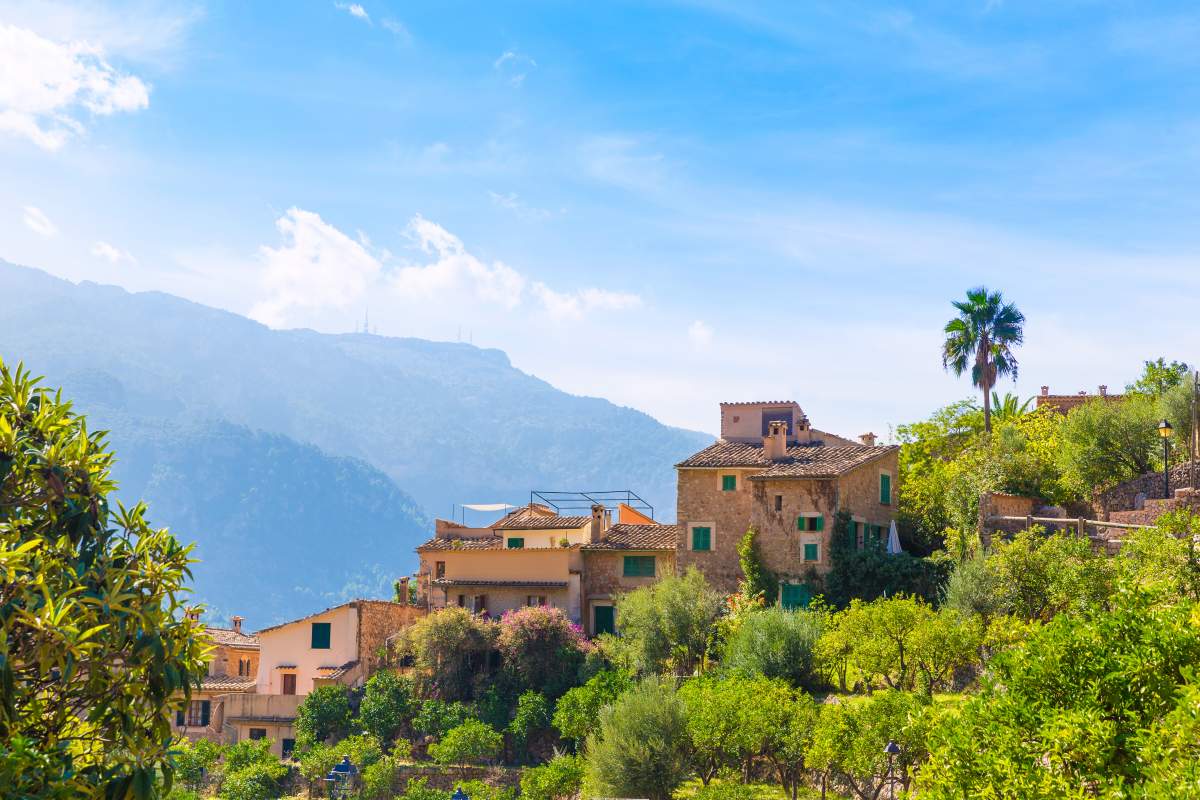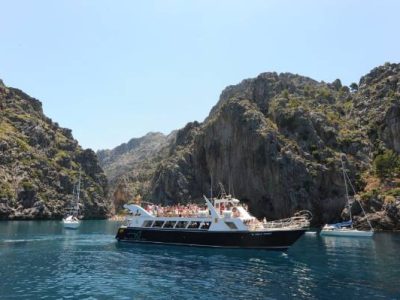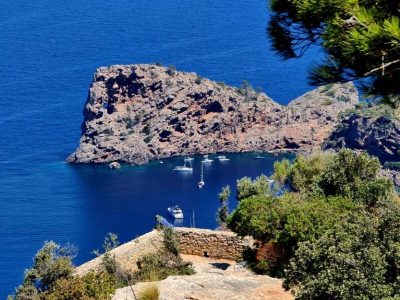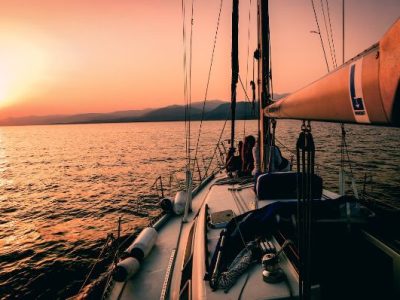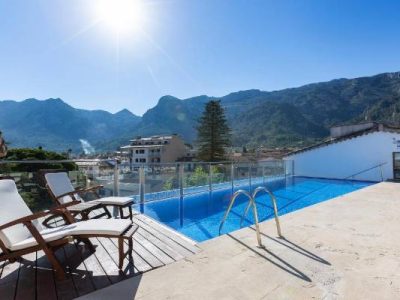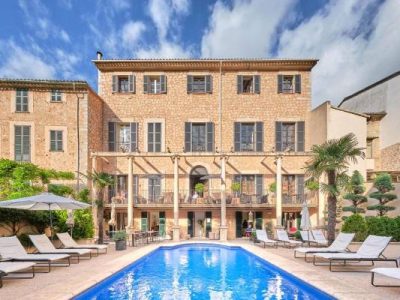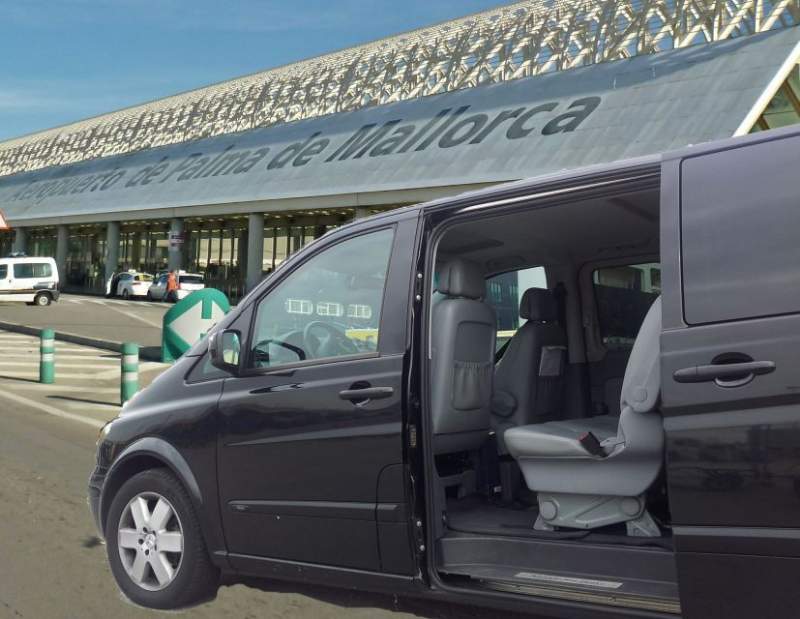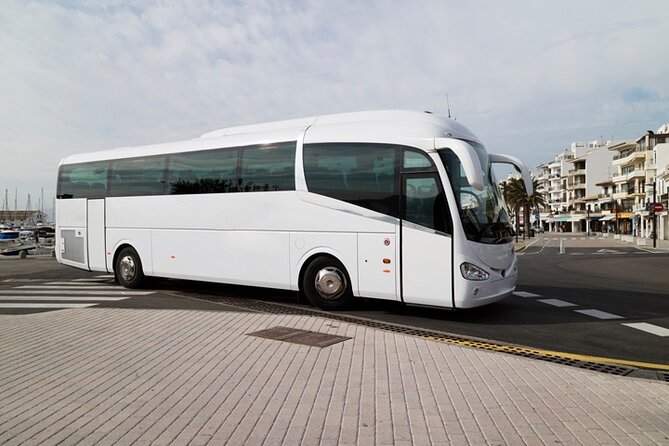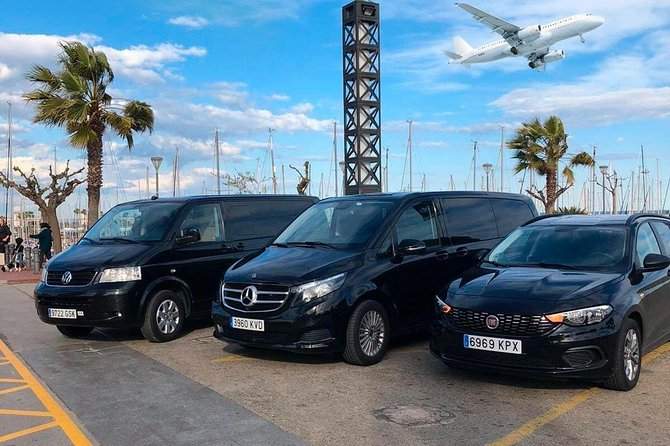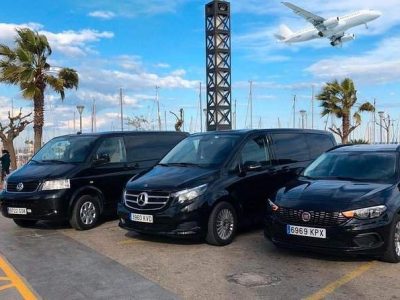All your holiday planning needs in one place, letting you book direct and benefit from official online rates
- Places To Go
- Things To Do
What’s Your Interest?
Traveling with kids
- Blog
Sóller, Mallorca, Things to do and see, hotels, market
Sóller is one of the most beautiful areas in Tramuntana, a unique scenario of biodiversity and natural charm.
On this page, you will find a lot of inspiration on things to do in Sóller, along with annual events, the history of the area and best places to stay.
- This is where I want to go!
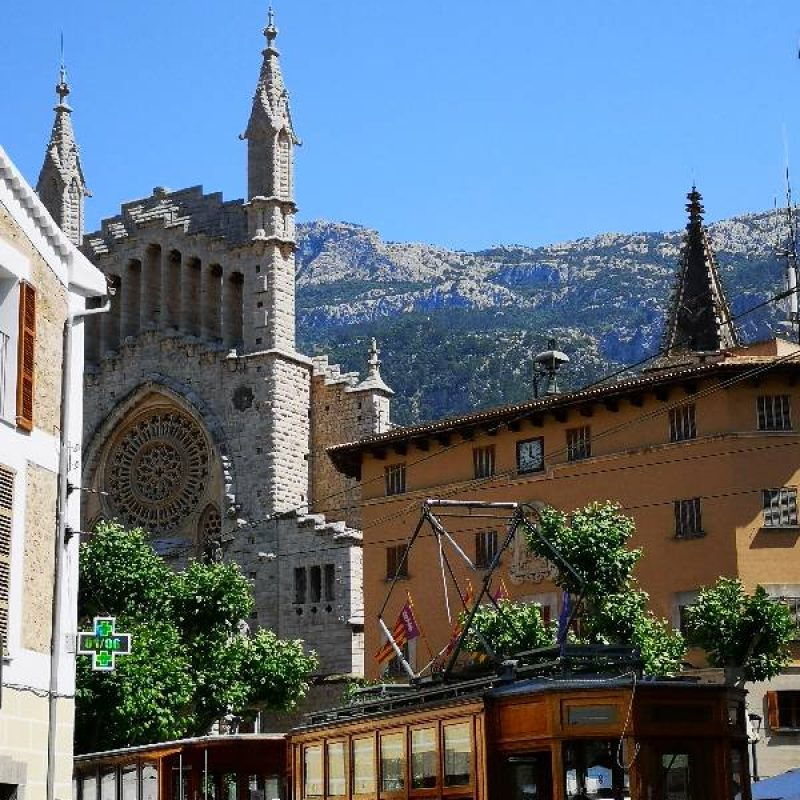
FEATURED EXPERIENCE
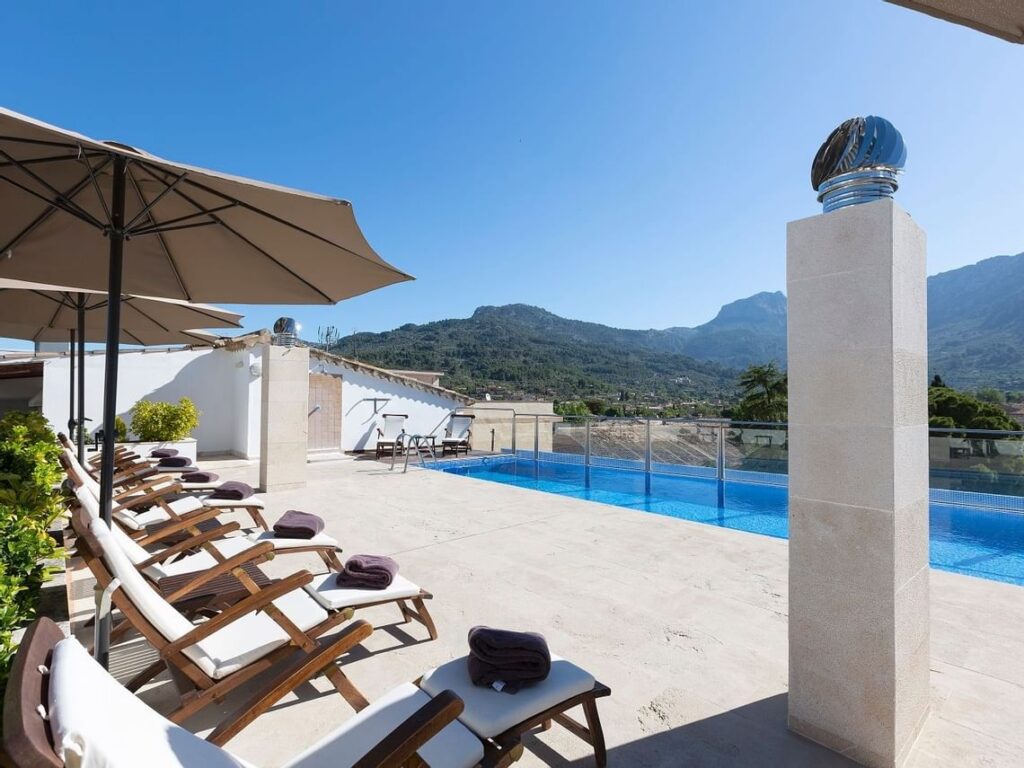
Experience True Romance
Gran Hotel Sóller
- Lowest Online Rates
What to expect in Sóller
Sóller is one of the most beautiful areas in Tramuntana, a unique scenario of biodiversity and natural charm.
On this page, you will find a lot of inspiration on things to do in Sóller, along with annual events, the history of the area and best places to stay.
Things to do and see in Sóller
Sóller enjoys a privileged location in one of the most scenic and beautiful valleys on the island making it perfect for physical activities such as hiking and cycling. However, behind the natural surroundings hides a treasury of cultural heritage manifested in the church, modernist mansions, art galleries and museums.
RIDE THE ANTIQUE TRAM TO PORT DE SÓLLER
If anything is synonymous with Sóller and Port de Sóller, it is oranges and the old orange tram connecting the two. Riding this iconic old tram gives you an incredibly authentic feeling of sweet nostalgia, as you pass through the scenic orange and olive plantations in the beautiful valley. The tram was inaugurated back in 1913, a year after the establishment of the connection between Palma and Sóller. Today, the original wooden cars are still in use, and you should not miss out on the opportunity to see and try this unique attraction.
ART EXHIBITION IN THE IMPRESSIVE CA’N PRUNERA MANSION

The mansion of Ca’n Prunera is one of the most remarkable examples of the playful art nouveau architectural style in Mallorca. Ca’n Prunera is one of the best evidences of the wealth and prosperity of Sóller in the beginning of the 20th century. Inside Ca’n Prunera, you can enjoy various contemporary art exhibitions of established and upcoming artists.
INDULGE IN MEDITERRANEAN FLOWERS AND PLANTS AT THE BOTANICAL GARDENS OF SÓLLER
The botanical gardens of Sóller is a must-see attraction for anyone interested in flora. At the Sóller botanical gardens, you will find an impressive variety of some of the most beautiful Balearic flowers and plants along with info about each of the species. There is also an option to join a guided tour in the gardens where you will be fully educated about the Mediterranean flora. Also, your camera is gonna love a visit here, your Instagram account is sure to get extra attention with pictures from this place.
DISCOVER THE LUSH VALLEYS ON BIKE
Sóller is a great starting point for many emblematic bike routes in the area. You can easily access some of the most scenic places in the Tramuntana e.g. the lush Fornalutx, Biniaraix and Binibassi valley where orange and lemon trees occupy most of the landscapes. You can also challenge yourself at the legendary Serpent road to the picturesque Port de sa Calobra. The possibilities are endless in Sóller.
VISIT THE UNIQUE MODERNIST STYLE CHAPEL OF SA CAPELLETA
This small chapel is a hidden gem between Sóller and Fornalutx, a great place to visit for a different experience. The chapel is built in modernist style, reminiscent of Gaudí, with stunning details. The chapel is situated in a divine spot with magical views of the Sóller valley.
GO SHOPPING IN CARRER DE SA LUNA

Carrer de sa Luna is the main shopping street in Sóller, it extends directly from the main square where the beautiful church stands. The street is full of small intriguing shops that calls for your attention, with great selections of local and international brands in all categories. After shopping, it’s once again time to visit the main square to have a well-deserved refreshment.
DISCOVER THE RICH HISTORY OF SÓLLER EXHIBITED AT THE LOCAL MUSEUM
In the heart of the charming town, in an 18th century town mansion, you will find the local history museum, Museu de Sóller, where you can learn about the rich history and the most influencial epochs of the area. The museum exhibits a wide range of archaeological artefacts, paintings, tools and traditional clothes.
RELAX AT THE BEACH
Port de Sóller is located in the most stunning cove, protected from strong winds. Here you will find two great beaches with plenty of space and facilities for a joyful and relaxing day. Behind the beaches run the promenade packed with shops, bars and restaurants.
VISIT PORT DE SA CALOBRA
Not far from Sóller and Port de Sóller you will find one of Mallorca’s most beautiful spots, the small cove of sa Calobra. You almost won’t believe your own eyes when you first witness this picturesque gem that almost seem surrealistic due to the deep colors and natural untouched beauty. Next to sa Calobra you find Cala Tuent, a small beach extending between gigantic rock walls that makes it overwhelming.
VISIT THE MARITIME MUSEUM
Museo Maritim is the name of the local museum exhibiting the history of Port de Sóller in images and artifacts. Museo Maritim is situated in a former chapel on the rocks overlooking the harbor and cove. At the museum, you will be introduced to the fascinating story of Port de Sóller and why it has been such an important harbor.
VISIT THE SANT BARTOLOMÉ CHURCH
The parish church of Sóller is one of the most beautiful of its kind in Mallorca. The unique details in the main facade made in Neo-Gothic style designed by Joan Rubio i Bellver, a partner of Gaudí, makes this church stand out and calls for a photo. The church is open every day for visits.
Next to the church, notice another beautiful architectural pearl, the Banco de Sóller building, designed by same architect and carries same characteristics as the church facade.
ENJOY A NOSTALGIC RIDE IN THE FERROCARRIL DE SÓLLER
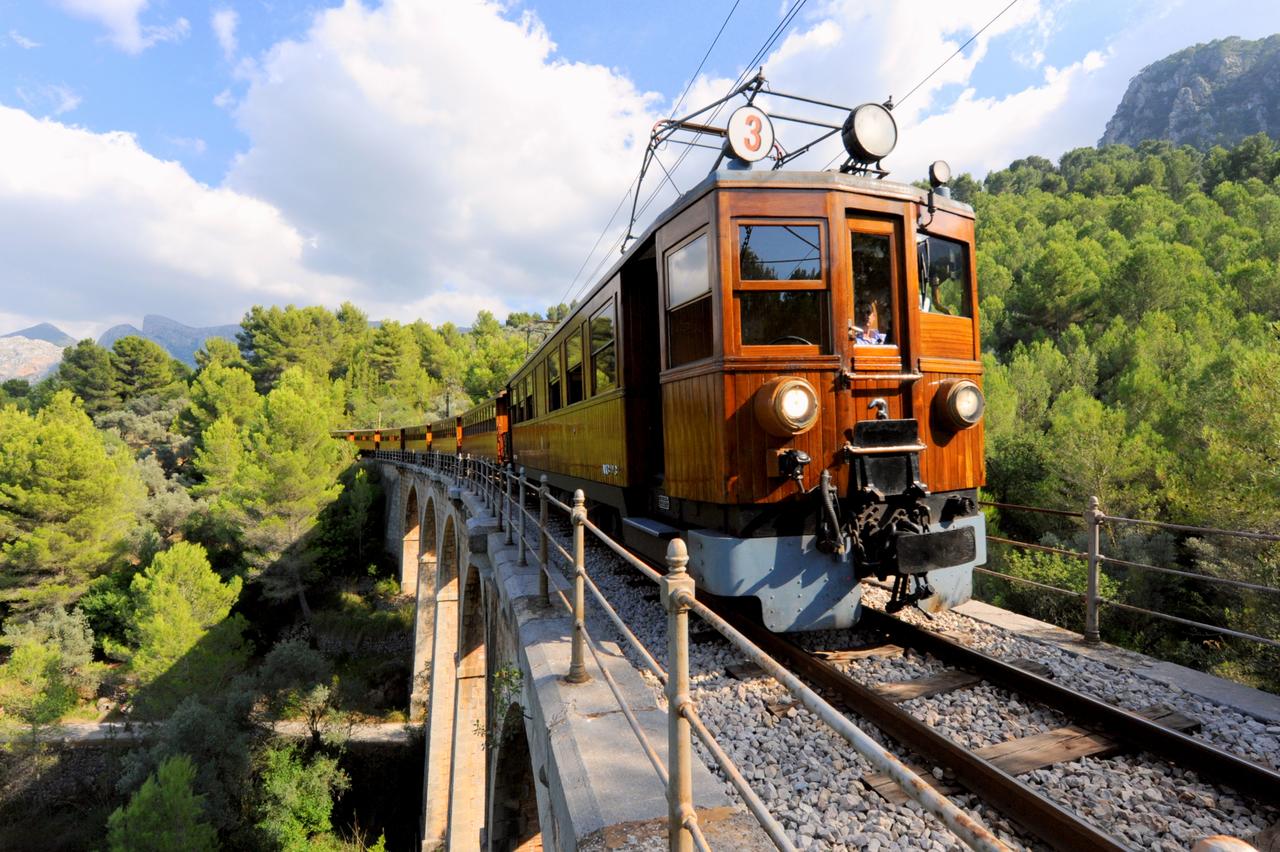
Ferrocarril de Sóller is the name of the antique train that connects Sóller and Palma. It was inaugurated back in 1912, and still today all the original cars with mahogany panels and brass fittings are still going strong. During the ride, you will see some of the most magnificent areas of the Tramuntana, the green valleys, the many fruit plantations, almond fields and forests. This truly is a unique attraction and an incredibly authentic experience that you should give yourself.
Learn about the antique train
ENJOY A UNIQUE PICASSO EXHIBITION
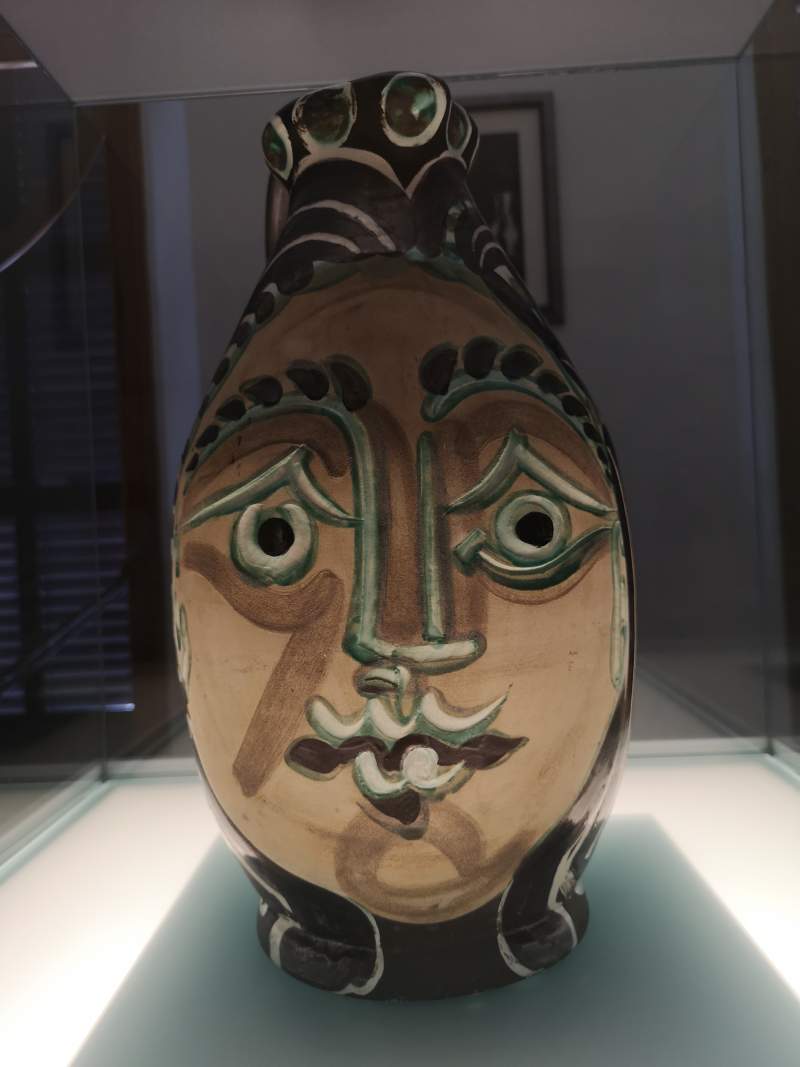
Inside the railway station building in Sóller you will find a free to enter Picasso exhibition consisting of original ceramic works of the surrealist artist. While inside, pay attention to the building itself as this old mansion used to be a luxury hotel.
INDULGE IN UNIQUE ARCHITECTURE
Sóller is a beautiful and very charming mountain town full of rustic buildings and impressive mansions evidencing the prosperity of the area. You will find a wide selection of local boutiques, restaurants and galleries to indulge in. Make sure to stroll by the Gran Hotel, the old market building, the Can Moratal and the Ca s’Americà to see some of the most impressive mansions from the beginning of the 20th century when economy was at its highest.
VISIT THE CHARMING VILLAGE OF FORNALUTX
If you can’t get enough of beautiful nature and picturesque scenery, a visit to Fornalutx is a must. The village has several times been awarded the third most beautiful village in all of Spain because of the way it is kept clean and preserved. Fornalutx offers a few places of interest to explore, such as the Can Xoroi local museum and former olive press, but also a handful of local bars and restaurants serving traditional Mallorcan dishes.
IMAGE GALLERY
Enjoy some beautiful pictures from Inca
FAQ
The beaches of Port de Sóller are just 7 km from Sóller town. You’ll find two fantastic golden beaches in the bay.
Sóller is famous for its oranges, highly sought-for all over the European continent. The lush and fertile mountain valleys offers optimal conditions for orange and lemon groves, resulting in a significant sweet taste.
The weekly market in Sóller is held Saturday morning in the center of town.
The journey in the antique train takes about an hour, with approx. 8 daily departures from the train station at Placa d’Espanya.
Sóller is easy to reach thanks to a well-developed infrastructure. You can get here by train, bus, taxi or bicycle. A taxi from Palma will cost you approx. 45 euro. You may also use bus line 210, or use the antique train.
Events in Sóller

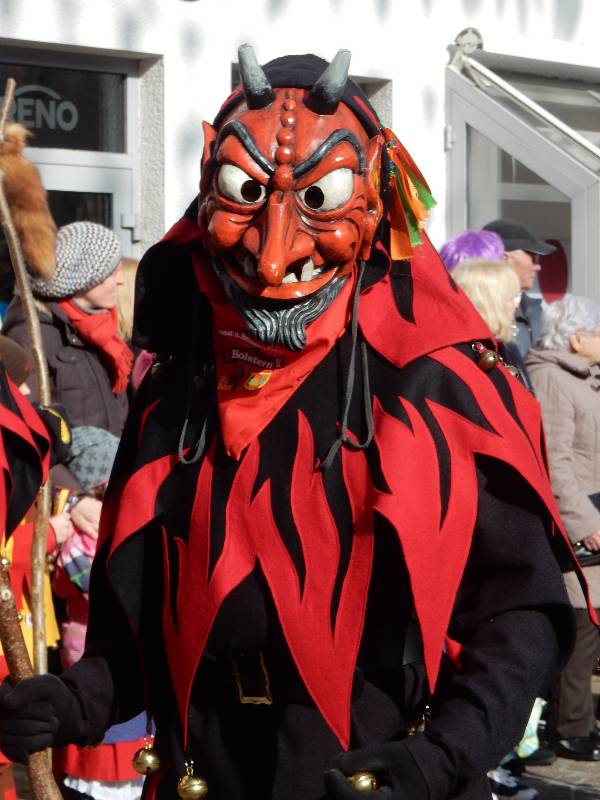
Weekly market in Sóller
Every Saturday morning, the local market is held in Sóller, in the main square of the town. This scenic marketplace, is the perfect place to browse hundreds of locally produced meats, cheeses, vines, veges and fruits. Grab yourself a glass of fresh squeezed orange juice, and let your senses be seduced.
Annual events and happenings
March / April
Fira de sa Taronja
Every year around the end of March/beginning of April, the annual orange fair is held in Sóller, Port de Sóller and Fornalutx. The orange is synonymous with the valleys of Sóller and Fornalutx, why the two municipalities cooperate in creating a series of fun and cultural events during this fair. You can look forward to one of the most scenic fairs in all of Europe, where the aroma of the citrus fruits is everywhere ion the air. Bars and restaurants make special menus during this fair, all with oranges as one of the main ingredients.
When: Late March/beginning of April
Where: Sóller, Port de Sóller and Fornalutx
May
Firo de Sóller
The main happening of the year is the May fair. Two weeks of cultural and fun activities are lined up in an extensive program, which also include the main event of the fair, the reenactment of the legendary battle between invading Ottoman privateers and the Mallorcan resistance in 1561. Several hundred locals participate in the reenactment that lasts for hours until victory is celebrated by the Sant Bartomeu church in the heart of the town.
During the fair you can also look forward to exhibitions, markets, concerts, traditional Mallorcan dances and contests. The May/spring fair in Sóller is a great attraction which gathers both islanders and tourists in a vibrant atmosphere.
When: May
Where: Sóller and Port de Sóller
June
Festes de Sant Pere
Sant Pere (Saint Peter) is protector of fishermen and celebrated in late June with numerous cultural events in the harbor area. There is always a great and jolly atmosphere accompanied by converts and exhibitions.
When: June 29th
Where: Port de Sóller
August
Festes de Sant Bartomeu (celebration of Saint Bartholomew)
Sant Bartomeu (Saint Bartholomew) is the patron saint of Sóller, as well as protector of the parish church. The saint is celebrated in the weeks leading up to his feast on August 24 with a series of cultural events and activities worth attending. One of the main highlights of the celebration, is an extensive art exhibition with numerous venues all over the two urban areas.
When: The weeks leading up to August 24th
Where: Old town and harbor
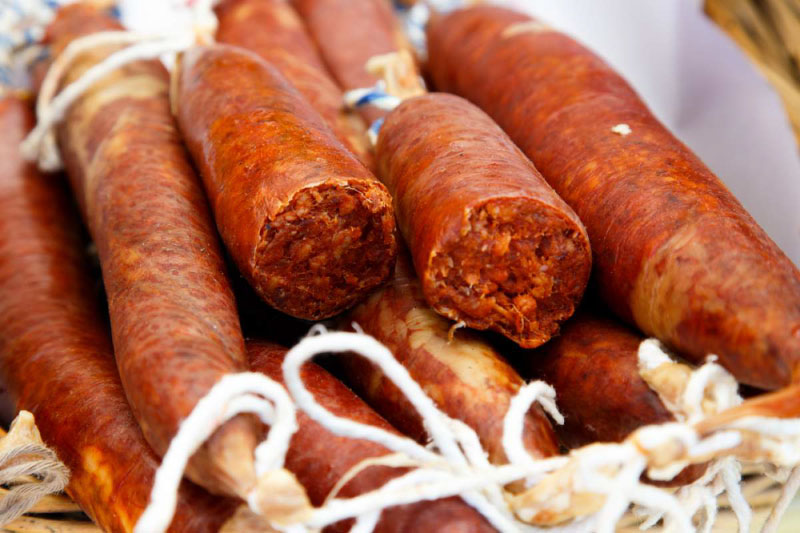
Support Local
Supporting local communities during your travels can have a profound impact. Stock up with groceries locally, stop in an artisan shop or enjoy a refreshment at a restaurant or bar. Now more than ever, these small businesses need support from travelers near and far.
Get to know Sóller
Sóller is one of the best known tourist destinations in the Tramuntana, namely because of its many natural areas of scenic nature and diverse wildlife. Sóller is located deep in the Serra de Tramuntana mountain range, in a scenic and beautiful valley that mouths out in the natural port by the sea.
The municipality is made up of seven population centers; Port de Sóller, Biniaraix, L’Horta, Es Estiradors, Ses Argiles, S’Alqueria de Comte and Sóller town.
The municipality covers a surface of 4,273 hectares with 3,627 of these protected, and comprise a total population of 13,705 inhabitants as of 2018. The municipality borders Deià, Bunyola, Escorca and Fornalutx, all of these too a part of the Tramuntana region.
History of Sóller
Prehistory
The first vestiges of human occupation in the area dates from the prehistory, about 5200-2700 BC. More than 25 archaeological sites has been excavated in Sóller, among these, necropolises, artificial caves and stone constructions. Some of the most remarkable include the caves of Can Don, Des Negret, Ses Cópis, Es Pas de Na María, Ses Alfábiles (Biniaraix), S’alova, the necropolises of Ses Tanques de Can Serra and Puig d’en Mora, and finally, the constructions of Claper Des Gentils, anca de Ca L’amic, Can Coll and Es Puig D’en Canals.
In the Muleta mountain, in the caves of the La Roca Rotja area, three bronze statues has been discovered which date from around the 4th or 3rd century BC. The statues are exhibited in the Museu de Mallorca in Palma.
Moorish period
In 902, Mallorca was annexed to the Emirate of Cordoba after centuries with no influence or dominance of foreign countries or empires.
It was Moorish general Issam al-Khawlani, whom in 902 captured and annexed the island under the Emirate of Cordoba ruled by the Umayyad Caliphate.The archipelago became known under the name “Islas Orientales de Al-Ándalus” with the capital of Madina Mayurqua, present day Palma. In 1015, the archipelago came under the Emirate of Dénia.
With the new Moorish rulers, the island saw a great increase in prosperity, as new fruits were introduced in the agriculture, it was convenient to do naval trading, as well as piracy raids against Christian ships could easily be launched.
Furthermore, the island was introduced to a fiscal policy that made it possible to construct mosques, baths, water supplies etc. The island was roughly divided in twelve administrative districts, each known as a “Juz” (plural. ajzā), whereof Sóller belonged to the Juz’ de Sûlyâr which also comprised the area of present day Fornalutx.
One of the most emblematic marks the Moors has left has been in the Tramuntana range where you find the so-called “marjades”, stone terraces carved into the rocky walls of the mountain slopes. These terraces allowed water from the mountains to travel and irrigate the crops. These marjades has been conserved as a part of UNESCO’s world heritage program, and one of the main reason why Tramuntana is a such unique place to visit.
The Aragonese conquest
In September 1229, King Jaume I of Aragón landed in the bay of Santa Ponca with his 20,000 soldiers and 700 horsemen, ready to conquer Mallorca. After a three months siege of Madina Mayurqua with about 20 – 30,000 casualties and massive destruction, the Moorish governor Abu-Yahya Muhàmmad surrendered in the Almudaina palace.
The bloodbath in the capital made about 15,000 Moors flee to the mountains of Tramuntana and Llevant. According to Llibre del Feits (Book of Acts), a chronicle documenting the entire conquest, the last places to be conquered was the Alaró castell and the Santueri castle (Felanitx), in the years 1231/32.
Archaeologists Jaume Deyà and Pablo Galera have conducted an incredible research based on excavations of more than 10 years they have done in the area of the Gorg Blau lake, which tells the story of 3,000 Moors who had retrenched themselves and resisted the Aragonese forces for almost two years. The excavation has been difficult to do as the two archaeologists have had to wait for droughts to be able to access this site, which was called “al-Yibal” during Moorish rule. Al-Yibal, which then became Almallutx (Almeruig in medieval Catalan), had an extension of about 160,000 square meters, and a note from 1276 mentions a walled enclosure of 300 meters. In 1595, a local priest spoke of the existence of a large town which he meant derived from Moorish times due to the finding of remains of a mosque.
The two archaeologists have managed to map out most of the Moorish settlement including houses, streets, the mosque with its mihrab (cemetery) with human remains and funeral gifts. Of artifacts, multiple ceramics, keys, cowbells and other tools was excavated. Another interesting find by Deyà and Galera at Almallutx, was a container with an inscription that was interpreted to something like “good luck”. This container was carefully analyzed in a laboratory, where remains of saffron, lemon and olive has been detected.
As the Aragonese almogarvars (medieval trooper) intensified and made progress in the Tramuntana, it became more difficult for the Moorish population here to hold stand. The lack of food and desperation led to extremely primitive behavior where cannibalism was practiced to survive.
Moorish representatives traveled to Sóller to meet with the Christians, in order to negotiate a pact with them for surrendering, but it was all in vain. Those Moors that was not killed, were sold as slaves.
You are encouraged to visit the Museum of Sóller to learn more about this story and many other from the local area, as well as see the fascinating artifacts found on the archaeological sites.
Following the successful campaign, King Jaume divided the island in about eight districts and, according to agreements between the participants, distributed the lands among barons, knights and church. In the Llibre del Repartiment de Mallorca (Book of Distribution of Mallorca), the area of Sóller went to Ponç Hug, count of Empúries and Gastón de Montcada de Forcalquier, viscount of Bearn. With this, the private kingdom of Mallorca was a reality.
The kingdom of Mallorca ended in 1349 with the defeat of Jaume III in the Battle of Llucmajor.
The legendary battle of Sóller
One of the most defining moments in the history of Sóller, was the attack of Algerian privateers on May 11, 1561.
From the first third of the 16th century, the Ottoman empire started attacking the Balearic Islands as part of its expansion campaign in the Mediterranean basin. In May 1558, the Ottoman fleet landed in Mahón, Menorca, sacked it completely and took 6,000 innocent people as slaves.
The Ottoman fleet, consisting of both Turk and Algerian corsairs, made numerous raids on the coastal towns of Mallorca, but was often defeated by the well-organized Mallorcan troops, such as the cases of Alcúdia and Pollenca.
On May 11, 1561, an attack on Sóller commanded by Grand Admiral Occhiali came to define the culture of this area. The squadron of 22 ships had stopped in Ibiza to re-supply, which was spotted by the Mallorcan people who came to know their plans to attack Sóller. Mallorcan captain general, Guillem de Rocafull, quickly sent a message to the captain of Sóller, Joan Angelats, as well as to the captains of Bunyola, Alaró and Santa Maria. The four captains quickly gathered their troops in Camp de s’Oca not far from the cove of Sóller.
The Ottoman corsairs managed to disembark near the area of Ses Puntes without being noticed by guards. The fleet was divided in two delegations, one that went straight for the harbor of Sóller and one that sailed further up the coast and attacked Sóller from the north. The Ottoman fleet attacked with about 1,600 men, while the Mallorcan resistance counted about 500 men.
The Mallorcan resistance went to the cove of Sóller, present day Port de Sóller, to fight the Ottoman privateers. They managed to fight down the attackers leaving the bay red of blood. As Captain Angelats and his men had gained full control of the bay, he made a wise decision waiting for the other group of privateers to come through the valley with the loot and hostages they had taken, instead of going to Sóller town to fight in the streets.
The Mallorcan troops managed to drive the privateers through the valley towards the steep cliffs. The Ottoman soldiers killed many hostages in an attempt to threat the Mallorcan troops. Eventually, the corsairs were pushed to the limit and had to surrender without conditions.
During this ugly yet heroic episode, there are two stories worth mentioning. The first is the tale of two brave women who by the use of a bar taken from a doorway killed a couple of privateers as they tried to forcefully enter their house, these women became known as “les Valentes Dons de Can Tamany” (Valiant Women of Can Tamany). The second story is about a group of bandits who did great damage to the invaders and their ships. These bandits were forgiven by King Philip II for their previous crimes.
Following this event, the Torre de Picada and the Sóller castle was constructed, a well as a part of the town was fortified including parts of the church which is still seen.
Every year in May, these events are reenacted during the annual main fair of Sóller, with hundreds of people participating.
The orange adventure
From the first third of the 19th century, Sóller saw a great increase in export of citrus fruits and olives to other countries, particularly France. Port de Sóller suddenly became the main commercial hub of the entire area, but not just that, it too became the reason why many of the traders started expanding and emigrating to Latin America and southern France, especially around 1835.
Along with the massive economical growth of Sóller, the population too increased significantly. This meant an increasingly active textile and shoe industry. Some of these factories operated up until the 1970’s.
In 1865, a plague struck the entire orange valley causing severe damage to all the olive and citrus trees. As a direct consequence of this downfall in the economical situation, many traders left for other countries and area, especially Belgium, France, Switzerland and the mainland of Spain. Here they created new businesses making fortunes in trading, before they returned to Sóller decades later.
Upon their return, Sóller experienced great prosperity once again. Some of the greatest examples of this, are the Bank of Sóller building designed by famous architect Joan Rubio, the Can Prunera, Ca s’America and Can Moratal mansions built in stunning modernist architectural styles with arte nouveau decorations. Moreover, in 1912, the famous railway connection between Sóller and Palma, Ferrocarril de Sóller, was inaugurated.
Practical Info
Useful Numbers
Emergency: 112
National police: 091
Local police: 092
Guarda civil: 062
Fire: 080
Maritime emergencies: 900 202 202
Town Hall: +34 971 63 02 00
Public Transport
Bus lines: 210
Power Supply
220V



